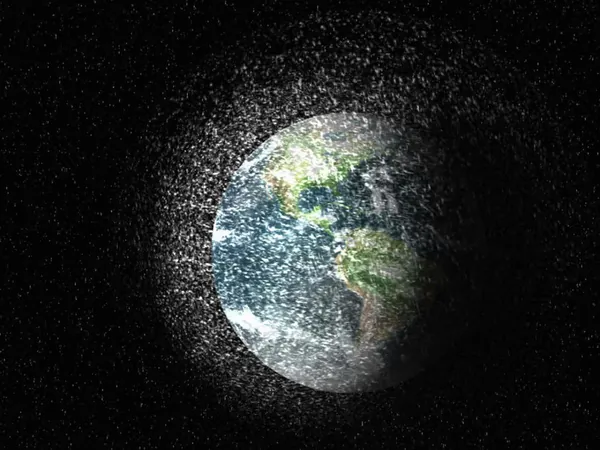
Unbelievable Space Junk: 1,100-Pound Rocket Fragment Crashes in Kenya Village
2025-01-01
Author: Ling
A shocking incident has unfolded in Makueni County, Kenya, where officials are investigating a large fragment of metal believed to be from a rocket that crashed into the village of Mukuku. The object, weighing an astounding 1,100 pounds and measuring approximately 8 feet in diameter, fell to Earth on December 30 at about 3:00 PM local time.
The Kenya Space Agency (KSA) is currently collaborating with various agencies and local authorities to assess the situation. They have secured the crash site and retrieved the wreckage, which is now in their custody for further examination. KSA's preliminary assessments suggest that the object is a separation ring from a launch vehicle. These rings are typically designed to either disintegrate upon re-entering the Earth's atmosphere or to land harmlessly in unpopulated areas.
In a statement, the KSA reassured the public that this incident poses no threat to safety, thanking the local villagers for their prompt reporting of the crash. They are now working diligently to determine the origin of the space debris.
This event has intensified the spotlight on the continuing issue of space debris as satellite and rocket launches proliferate at an unprecedented pace. With thousands of operational satellites and countless missions being planned every year, experts warn that the amount of space junk in orbit could soon reach critical levels, leading to more potential hazards.
In recent years, there have been several notable incidents involving manmade space debris colliding with Earth. For instance, in 2022, a fragment from a SpaceX Dragon capsule landed on an Australian sheep farm, creating a stir in the rural community. Earlier this year, a family in Naples, Florida faced dramatic consequences when a piece of falling metal crashed through their home, leaving them shaken but grateful that no one was injured.
Globally, space agencies are on high alert as incidents involving uncontrolled re-entries can pose significant risks. NASA has publicly criticized countries, particularly China, for allowing large rocket bodies to return to Earth unchecked. Moreover, in February, the European Space Agency reported that a satellite, weighing as much as an adult male rhinoceros, returned to our atmosphere uncontrollably, re-entering over the north Pacific Ocean, narrowly avoiding populated areas.
As the discussion around space debris intensifies, it is clear that we must find viable solutions to manage this growing problem. Whether through regulation or enhanced technology, the safety of those on the ground must be prioritized in our quest for exploration beyond our planet. Stay tuned as this story develops – what does the future hold for our skies?



 Brasil (PT)
Brasil (PT)
 Canada (EN)
Canada (EN)
 Chile (ES)
Chile (ES)
 Česko (CS)
Česko (CS)
 대한민국 (KO)
대한민국 (KO)
 España (ES)
España (ES)
 France (FR)
France (FR)
 Hong Kong (EN)
Hong Kong (EN)
 Italia (IT)
Italia (IT)
 日本 (JA)
日本 (JA)
 Magyarország (HU)
Magyarország (HU)
 Norge (NO)
Norge (NO)
 Polska (PL)
Polska (PL)
 Schweiz (DE)
Schweiz (DE)
 Singapore (EN)
Singapore (EN)
 Sverige (SV)
Sverige (SV)
 Suomi (FI)
Suomi (FI)
 Türkiye (TR)
Türkiye (TR)
 الإمارات العربية المتحدة (AR)
الإمارات العربية المتحدة (AR)